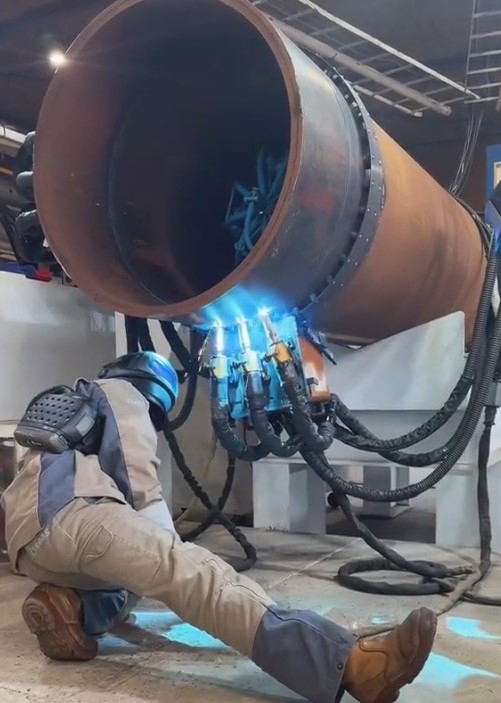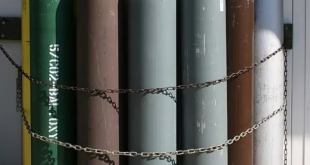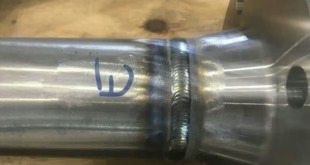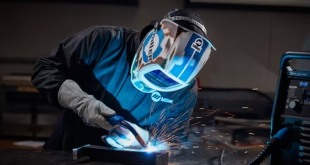Preheating Metal Before Welding
Introduction
Preheating involves heating the base metal to a specific temperature before welding. This preparatory step is often overlooked but is essential for certain materials and conditions. The brief overview of preheating in welding reveals its primary purpose: to reduce the risk of cracking, improve weld quality, and ensure the overall success of the welding operation.
When metals are welded, they undergo rapid heating and cooling, leading to significant thermal stresses. These stresses can cause cracking, distortion, and other defects if not managed properly. Preheating helps to mitigate these risks by reducing the thermal gradient between the weld area and the surrounding base metal. By doing so, it slows down the cooling rate of the weld, allowing for a more controlled and stable welding environment.
What is Preheating?
Definition of Preheating
Preheating is a preparatory process in welding that involves heating the base metal to a specific temperature before the welding process begins. This technique is crucial in various welding applications as it helps to minimize thermal stresses and prevent defects such as cracking. Preheating is typically used to ensure that the temperature of the metal is elevated uniformly, reducing the thermal gradient between the weld zone and the surrounding material. By doing so, preheating enhances the overall quality and integrity of the weld, making it an essential step for welding certain types of metals and under specific conditions.

Common Methods of Preheating Metals
There are several methods used to preheat metals, each with its advantages and applications. The choice of method depends on factors such as the type of metal, the thickness of the material, and the specific requirements of the welding process. Here are some of the most common preheating methods:
- Using a Torch: One of the simplest and most widely used methods, preheating with a torch involves using an oxy-fuel or propane torch to heat the metal. The torch is moved back and forth across the surface of the metal to achieve an even temperature distribution.Suitable for smaller areas and localized heating. Commonly used in field welding and repair work.
- Electrical Resistance Heating: This method uses electrical resistance heaters, such as ceramic heating pads or blankets, to generate heat. The heaters are placed on the metal surface and connected to a power source to provide consistent and controlled heating.Ideal for larger areas and more controlled heating requirements. Often used in industrial applications and for preheating thick sections of metal.
- Induction Heating: Induction heating involves generating heat within the metal using electromagnetic fields. An induction coil is placed around the metal part, and an alternating current is passed through the coil, creating eddy currents that heat the metal internally.Suitable for precise and rapid heating. Commonly used in manufacturing and production environments where uniform heating is critical.
- Ovens and Furnaces: For large components or assemblies, preheating can be done in industrial ovens or furnaces. The metal parts are placed inside the oven or furnace and heated to the desired temperature.Ideal for preheating large or complex components. Used in industries such as aerospace, automotive, and heavy machinery manufacturing.
Why Preheating is Essential in Welding?
Reducing Residual Stresses
Residual stresses are internal stresses that remain in the material after welding due to the rapid heating and cooling cycles. These stresses can lead to warping, deformation, and even cracking over time. Preheating helps to minimize residual stresses by reducing the temperature gradient between the weld area and the surrounding base metal. This results in a more gradual and controlled heating and cooling process, which significantly lowers the risk of stress-related issues in the welded structure.
Preventing Cracking
One of the primary reasons for preheating is to prevent different types of cracking that can compromise the integrity of the weld.
- Hydrogen-Induced Cracking: Also known as cold cracking, this type of cracking occurs when hydrogen is present in the weld metal and the heat-affected zone (HAZ). Hydrogen can be introduced into the weld from various sources, such as moisture, oil, or contaminants. Preheating helps to slow down the cooling rate, allowing hydrogen to diffuse out of the weld area, thereby reducing the risk of hydrogen-induced cracking.
- Thermal Cracking: Rapid cooling can cause high thermal gradients, leading to thermal stresses that result in cracking. Preheating ensures that the metal cools more slowly and uniformly, minimizing the risk of thermal cracking.
Improving Weld Microstructure
The microstructure of the weld metal and the heat-affected zone plays a crucial role in determining the mechanical properties of the welded joint. Rapid cooling can lead to the formation of brittle microstructures, such as martensite, which are undesirable because they lack toughness and ductility. Preheating slows down the cooling rate, promoting the formation of more desirable microstructures, such as ferrite and pearlite in steels, which enhance the overall toughness and ductility of the weld.
Enhancing Diffusion of Alloying Elements
Preheating also facilitates the diffusion of alloying elements within the weld metal and the base metal. Alloying elements, such as carbon, chromium, and nickel, are essential for achieving specific mechanical properties and corrosion resistance in welded joints. By providing a higher temperature environment, preheating allows these elements to diffuse more evenly and thoroughly throughout the weld, resulting in a more homogeneous and well-balanced microstructure.
Facilitating a More Stable Arc
A stable arc is crucial for producing consistent and high-quality welds. Preheating helps to achieve a more stable arc by reducing the temperature difference between the welding electrode and the base metal. This stability ensures better control over the welding process, leading to fewer defects and improved weld quality. Additionally, a stable arc helps in achieving a smoother and more even weld bead.
Minimizing Distortion
Welding can cause significant distortion due to the expansion and contraction of the metal during heating and cooling. This distortion can lead to misalignment and dimensional inaccuracies in the welded structure. Preheating reduces the thermal gradients and residual stresses, thereby minimizing the amount of distortion. This is particularly important in precision applications where maintaining tight tolerances is critical.
Factors Affecting Preheat Requirements
Type of Metal
The type of metal being welded significantly influences the need for preheating and the required preheat temperature.
- Carbon Steel: High-carbon steels and medium-carbon steels typically require preheating because they are more prone to cracking due to their higher hardness and brittleness. The carbon content increases the hardenability of the steel, making it more susceptible to rapid cooling and, consequently, cracking.
- Low-Alloy Steel: These steels often require preheating, especially if they contain elements like chromium, molybdenum, or nickel, which can increase the material’s hardenability. Preheating helps to prevent the formation of brittle microstructures.
- Stainless Steel: Generally, austenitic stainless steels do not require preheating due to their low carbon content and high ductility. However, ferritic and martensitic stainless steels might need preheating to avoid cracking.
- Other Metals: Non-ferrous metals like aluminum and copper typically do not require preheating, but certain alloys and specific conditions may necessitate it.
Thickness of the Material
The thickness of the material plays a crucial role in determining the need for preheating.
- Thick Sections: Thicker materials are more prone to residual stresses and rapid cooling, which can lead to cracking. Preheating is often required to ensure a uniform temperature distribution and controlled cooling.
- Thin Sections: Thin materials generally do not require preheating as they cool down more quickly and uniformly, reducing the risk of cracking and residual stress.
Welding Process Used
The choice of welding process affects the need for preheating.
- Shielded Metal Arc Welding (SMAW): Often requires preheating, especially for high-carbon steels and thick sections, due to the high heat input and slower cooling rates.
- Gas Metal Arc Welding (GMAW): Preheating might be necessary for thicker materials and certain alloys to avoid rapid cooling and thermal stresses.
- Gas Tungsten Arc Welding (GTAW): Usually involves lower heat input, reducing the need for preheating, but it might still be required for specific materials and thicknesses.
- Flux-Cored Arc Welding (FCAW): Similar to SMAW, this process might require preheating for thick sections and high-carbon steels to manage residual stresses and avoid cracking.
Environmental Conditions
The ambient conditions during welding can also impact the preheat requirements.
- Cold Environments: Welding in cold temperatures increases the risk of thermal shock and cracking. Preheating ensures that the base metal is at an optimal temperature, reducing the thermal gradient and preventing sudden cooling.
- Controlled Environments: Indoor or controlled environments with stable temperatures may reduce the need for preheating. However, specific material and thickness considerations may still necessitate preheating.
- Humidity and Moisture: High humidity levels can introduce moisture into the weld area, increasing the risk of hydrogen-induced cracking. Preheating helps to remove moisture and minimize this risk.
Determining the Right Preheat Temperature
Guidelines for Different Metals
Selecting the appropriate preheat temperature is critical to ensuring the success of the welding process. Different metals require different preheat temperatures based on their composition, properties, and susceptibility to various welding defects.
- Carbon Steels: The preheat temperature for carbon steels depends on their carbon content. Low-carbon steels (up to 0.30% carbon) generally require preheat temperatures ranging from 50°C to 150°C (122°F to 302°F). Medium-carbon steels (0.30% to 0.60% carbon) might need preheating between 150°C to 300°C (302°F to 572°F). High-carbon steels (above 0.60% carbon) often require higher preheat temperatures, typically between 250°C to 400°C (482°F to 752°F).
- Low-Alloy Steels: These steels often contain alloying elements like chromium, molybdenum, or nickel, which increase hardenability. Preheat temperatures can range from 150°C to 400°C (302°F to 752°F), depending on the specific alloy and thickness.
- Stainless Steels: Austenitic stainless steels generally do not require preheating. Ferritic and martensitic stainless steels, however, may need preheating to temperatures between 150°C to 300°C (302°F to 572°F) to prevent cracking.
- Other Metals: Non-ferrous metals like aluminum and copper usually do not require preheating, but some specific alloys or thick sections may need preheat temperatures ranging from 100°C to 200°C (212°F to 392°F).
Role of Carbon Equivalent (CE) in Determining Preheat Temperature
The carbon equivalent (CE) is a critical factor in determining the appropriate preheat temperature for steels. The CE value helps predict the hardenability and the potential for cracking in the weld zone. The formula for calculating the carbon equivalent is:
\( \mathrm{CE}=\% C+\frac{\% \mathrm{Mn}}{6}+\frac{\% \mathrm{Cr}+\% \mathrm{Mo}+\% \mathrm{V}}{5}+\frac{\% \mathrm{Cu}+\% \mathrm{Ni}}{15} \)
Based on the CE value, the preheat temperature can be adjusted:
- CE < 0.40: Typically, preheating is not necessary for low-carbon steels with a CE value below 0.40.
- CE 0.40 – 0.60: Steels with a CE value between 0.40 and 0.60 usually require moderate preheating, typically between 100°C to 250°C (212°F to 482°F), depending on thickness.
- CE > 0.60: High-carbon steels with a CE value above 0.60 generally need higher preheat temperatures, ranging from 200°C to 400°C (392°F to 752°F), to avoid cracking and ensure a good weld.
Industry Standards and Recommendations
Industry standards provide guidelines and recommendations for preheating based on extensive research and field experience. Some key standards include:
- American Welding Society (AWS): The AWS provides detailed guidelines for preheating in various welding codes, such as AWS D1.1 for structural steel welding. These standards specify minimum preheat temperatures based on material type, thickness, and welding process.
- American Society of Mechanical Engineers (ASME): ASME standards, particularly in the Boiler and Pressure Vessel Code (BPVC), outline preheating requirements for different metals used in pressure vessels and piping systems.
International Organization for Standardization (ISO): ISO standards, such as ISO 13916, provide general principles for preheating and recommend temperature ranges for different materials and conditions.
Common Challenges and Solutions
Dealing with Varying Material Thicknesses
Welding projects often involve materials of different thicknesses, which can complicate the preheating process.
Challenge:
Achieving uniform preheating across materials with varying thicknesses is difficult because thinner sections heat up and cool down more quickly than thicker sections.
Solution:
- Staggered Preheating: Preheat thicker sections first and then move to thinner sections to ensure even temperature distribution.
- Multi-Zone Heating: Use multi-zone heating equipment that can independently control the temperature in different areas, allowing for tailored heating to match the specific needs of different material thicknesses.
- Thermal Insulation: Apply thermal insulation on thinner sections to slow down their cooling rate, helping to maintain a more uniform temperature across the entire workpiece.
Preheating in Low Ambient Temperatures
Welding in cold environments presents unique challenges, as the metal cools rapidly, increasing the risk of cracking.
Challenge:
Maintaining the required preheat temperature in low ambient temperatures can be difficult due to rapid heat loss.
Solution:
- Enclosures and Tents: Use portable welding tents or enclosures to shield the work area from cold winds and stabilize the temperature.
- Preheat Ovens: Utilize portable preheat ovens to bring the metal up to the required temperature before moving it to the welding area.
- Continuous Monitoring: Employ continuous temperature monitoring to ensure that the preheat temperature remains stable throughout the welding process. Adjust heating methods as needed to compensate for ambient temperature fluctuations.
Addressing Equipment Limitations
Limited access to advanced preheating equipment or the need to work in remote locations can pose significant challenges.
Challenge:
Lack of access to specialized preheating equipment or the necessity to work in remote or field conditions can limit preheating options.
Solution:
- Portable Heating Solutions: Use portable heating solutions like propane or oxy-fuel torches, which are easy to transport and use in field conditions.
- Electric Resistance Pads: Deploy electric resistance heating pads that can be powered by portable generators, providing a flexible and reliable source of heat.
- Preheat Induction Systems: Opt for compact induction heating systems that can be transported and set up in remote locations. These systems are efficient and provide rapid, localized heating.
- Backup Equipment: Always have backup heating equipment on hand to avoid downtime in case of equipment failure. Redundancy ensures that the welding process can continue without significant delays.
Applications of Preheating
Preheating metal before welding is a common practice employed across various industries to ensure the quality, integrity, and longevity of welded structures. Different industries utilize preheating for specific applications where the benefits of preheating are particularly valuable. Here are some key applications of preheating:
Structural Welding
In structural welding applications, preheating is often used to weld large and thick sections of steel or other metals. Preheating helps to reduce thermal stresses and minimize distortion in welded joints, ensuring the structural integrity of buildings, bridges, and other infrastructure projects. By preheating the base metal, structural welders can achieve better weld penetration and fusion, resulting in stronger and more reliable connections between structural components.
Pressure Vessel Fabrication
Pressure vessels, such as boilers, tanks, and reactors, are subjected to high internal pressures and temperature fluctuations during operation. Preheating is essential in pressure vessel fabrication to minimize the risk of cracking and ensure the integrity of welded joints. By preheating the base metal, welders can reduce residual stresses and improve the ductility of the weld zone, resulting in welds that can withstand the demanding operating conditions of pressure vessels.
Pipeline Construction
In pipeline construction, preheating is commonly used to weld large-diameter pipes made of materials such as carbon steel or alloy steel. Preheating helps to prevent hydrogen-induced cracking and improve the toughness of the welded joints, ensuring the reliability and safety of the pipeline. By preheating the pipe joints before welding, pipeline welders can achieve better weld penetration and fusion, resulting in high-quality welds that meet the stringent requirements of pipeline standards and regulations.
Aerospace Industry
In the aerospace industry, where precision, reliability, and safety are paramount, preheating plays a crucial role in welding aircraft components and structures. Preheating is used to weld aluminum, titanium, and other aerospace-grade materials, ensuring the integrity of welded joints in critical aircraft components such as fuselage panels, engine mounts, and landing gear assemblies. By preheating the base metal, aerospace welders can achieve superior weld quality, minimize distortion, and meet the stringent quality standards and specifications of the aerospace industry.
FAQs
Is preheating necessary for all welding processes?
Yes, preheating is essential for most welding processes, especially when working with materials prone to cracking or distortion.
How does preheating minimize cracking in welded joints?
Preheating helps reduce the temperature differential between the weld zone and the surrounding metal, preventing rapid cooling and thereby minimizing the risk of cracking.
Can preheating be skipped to save time and costs?
While it may seem like a time-consuming step, skipping preheating can lead to compromised weld quality, increased rework, and higher overall costs in the long run.
What is the recommended preheat temperature for carbon steel?
The recommended preheat temperature for carbon steel typically ranges from 150°C to 300°C, depending on factors such as material thickness and welding process.
Are there any safety precautions to consider when preheating metal?
Yes, safety precautions such as proper ventilation, fire safety measures, and personal protective equipment (PPE) must be observed to prevent accidents and ensure worker safety.
Conclusion
Preheating metal before welding is not just a recommended practice; it is a critical step in ensuring the integrity and longevity of welded joints. By understanding its benefits, adhering to best practices, and utilizing appropriate methods, welders can achieve superior weld quality, minimize defects, and enhance structural integrity across various industries
 Welding of Welders All about Welding and Welders
Welding of Welders All about Welding and Welders



